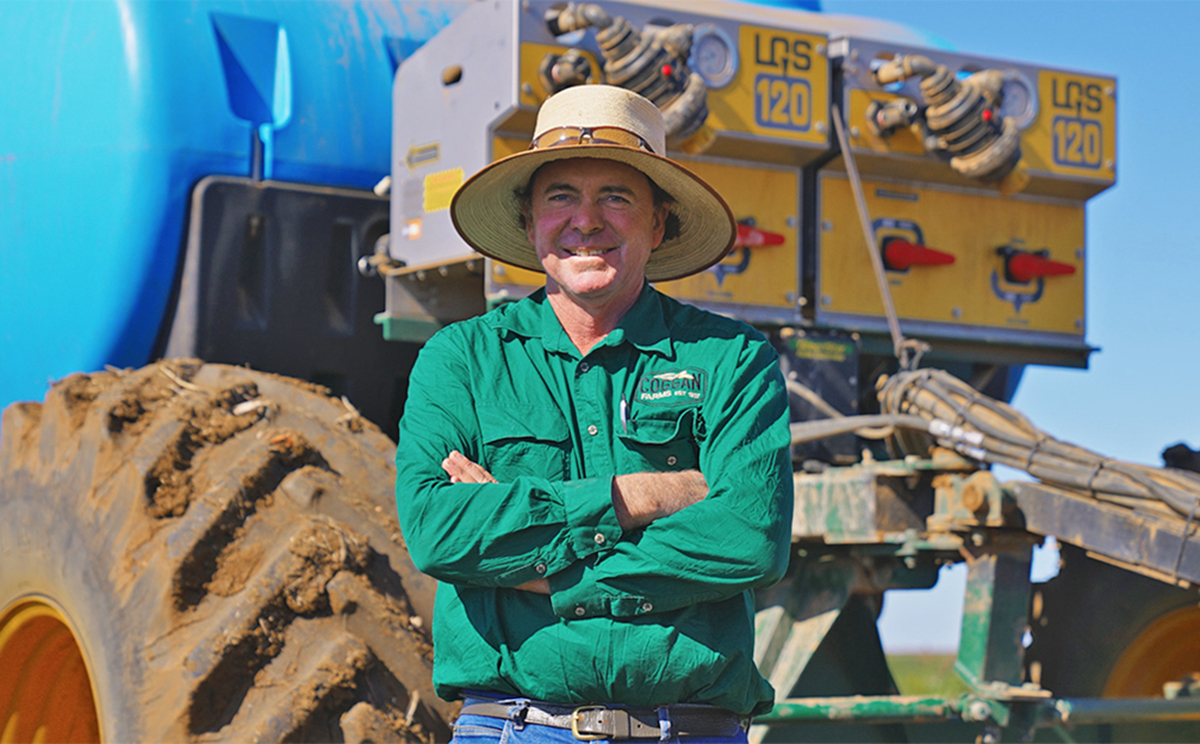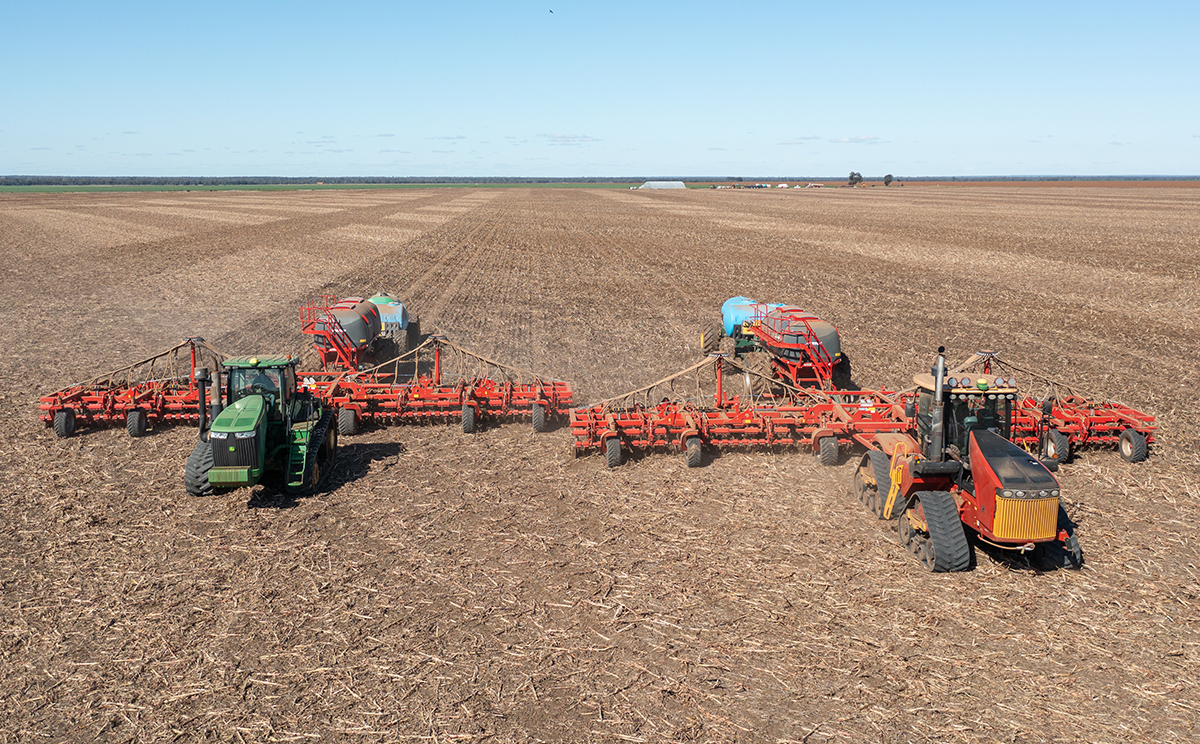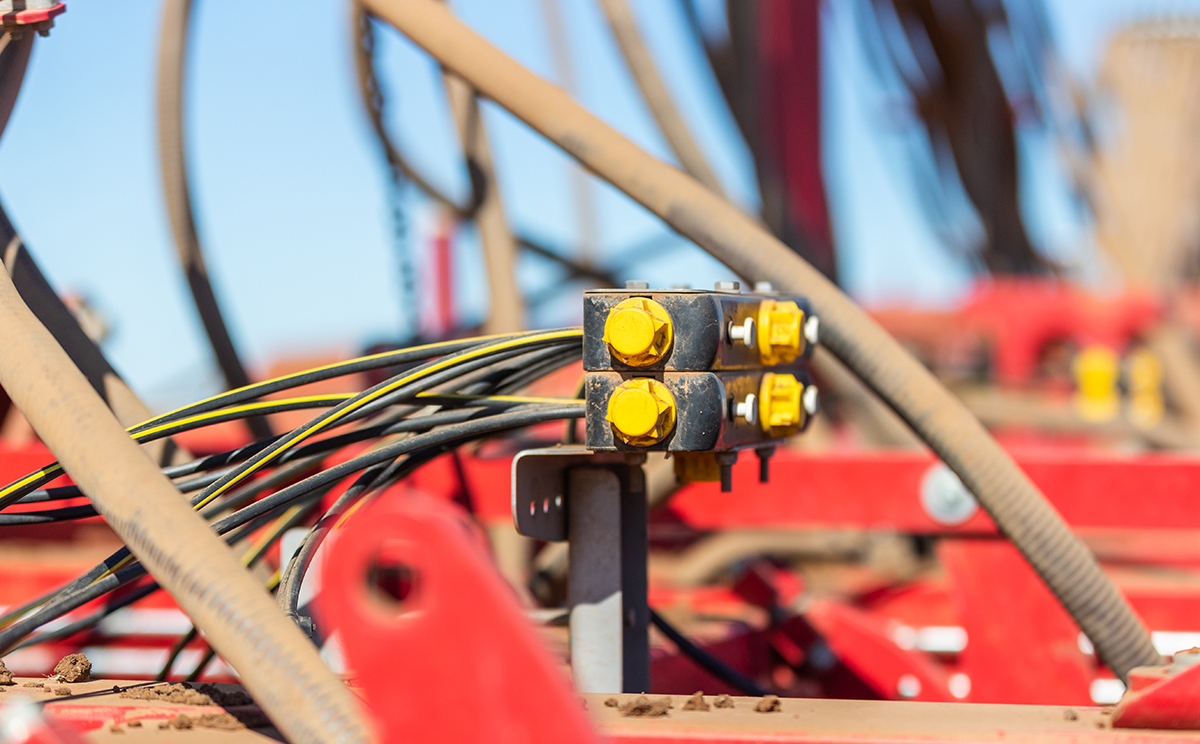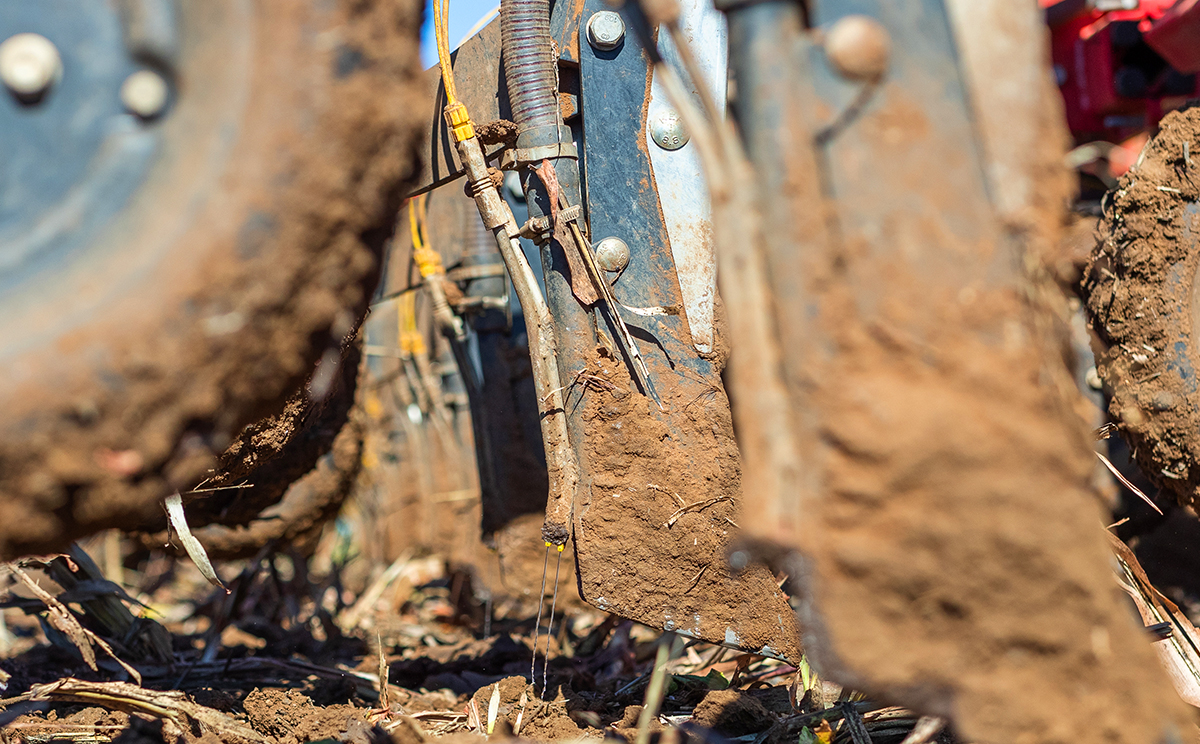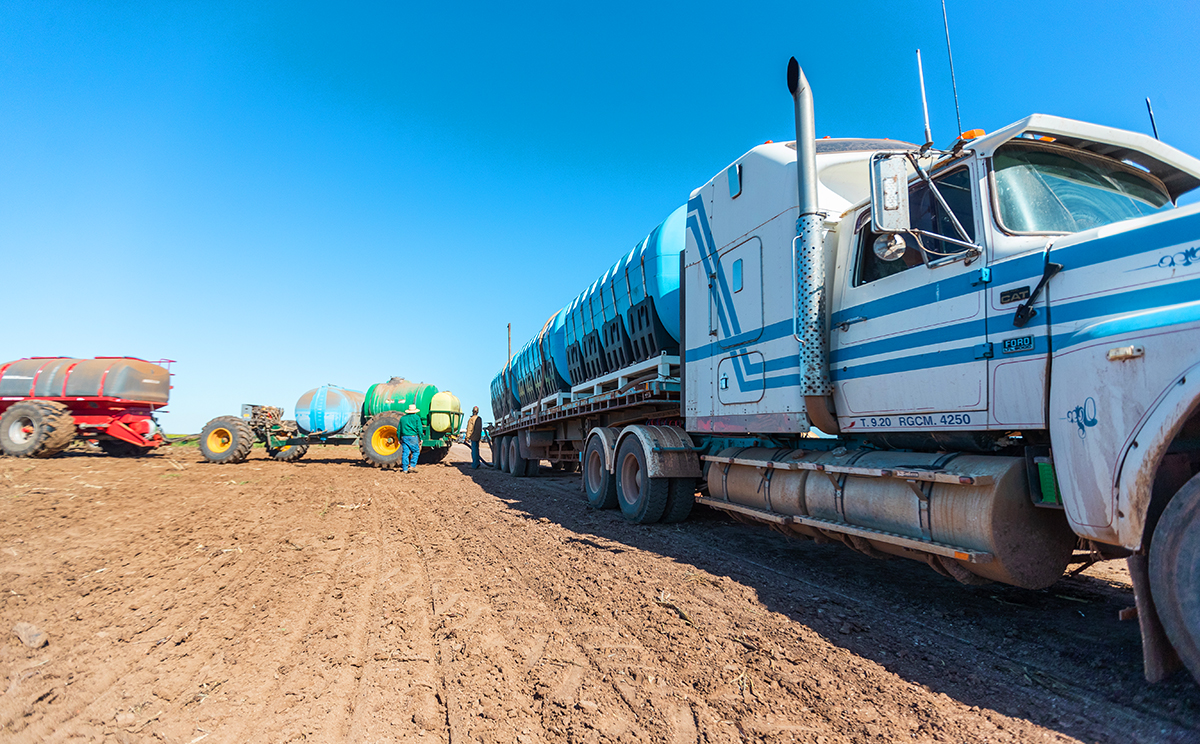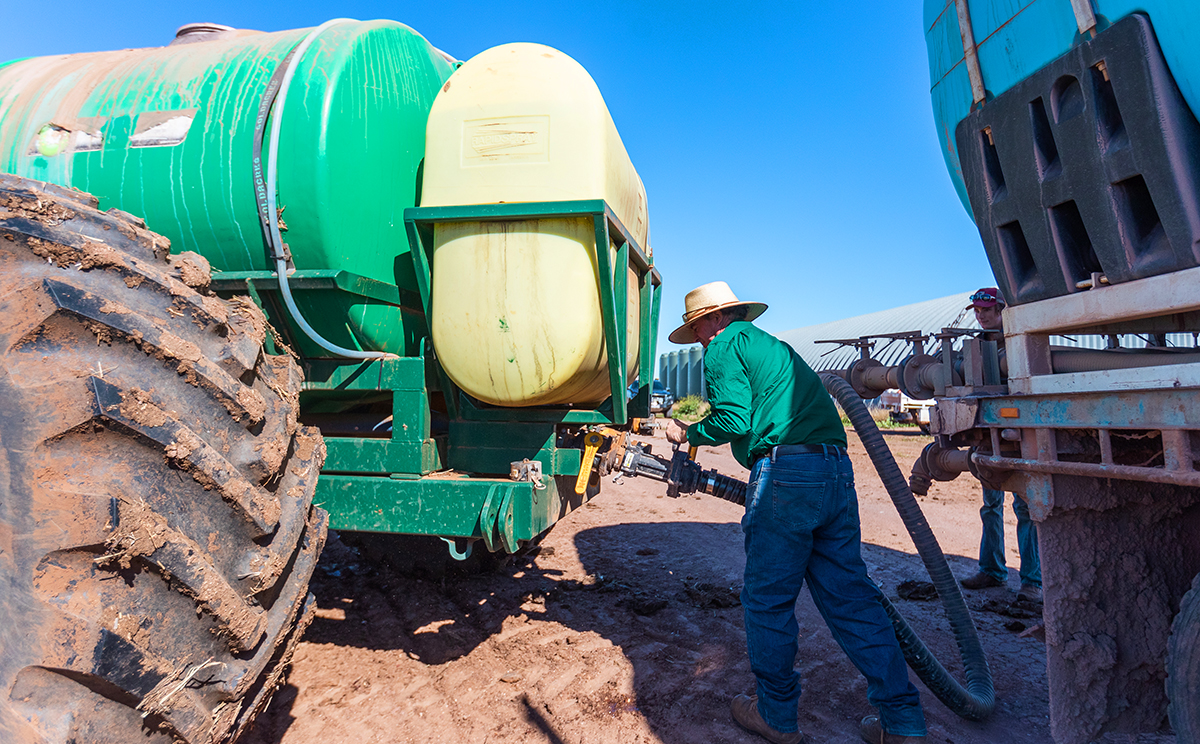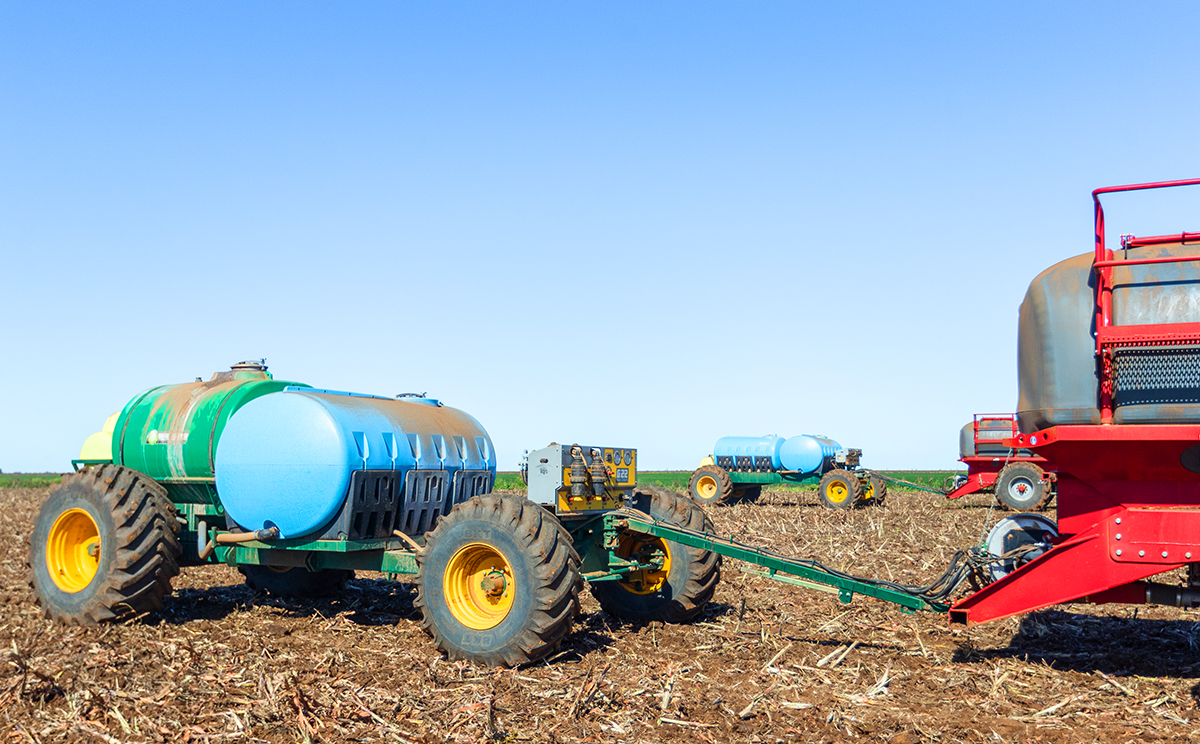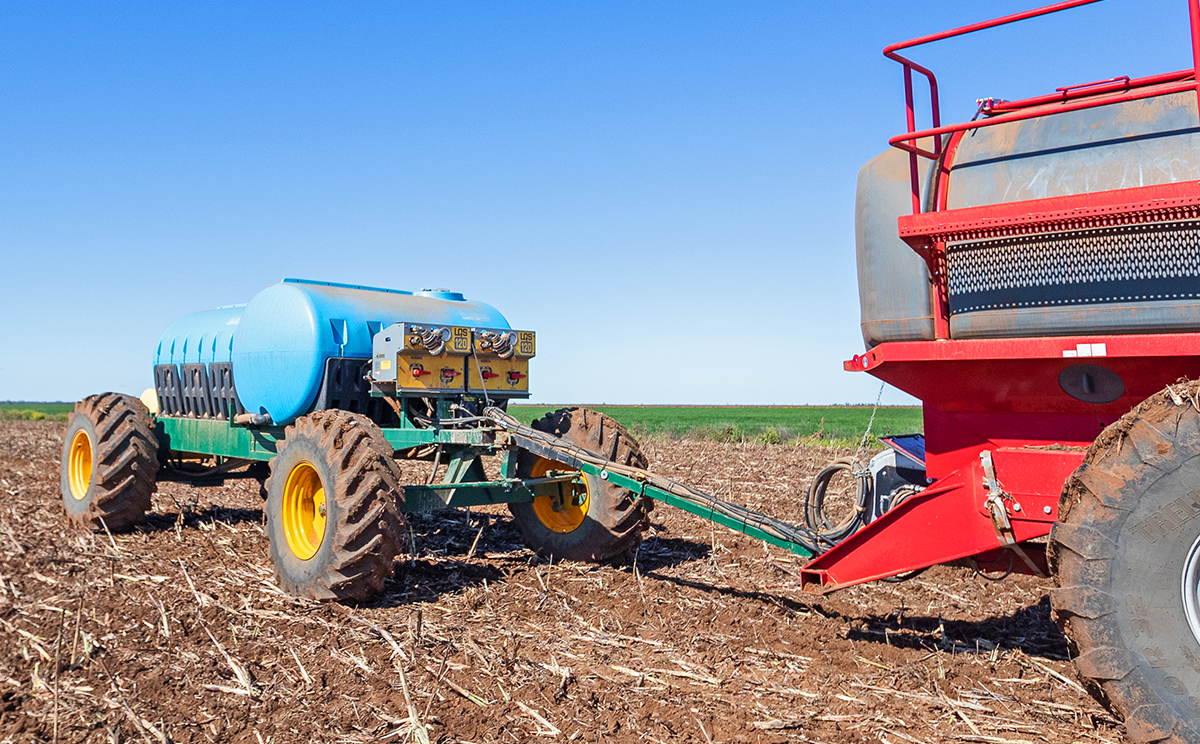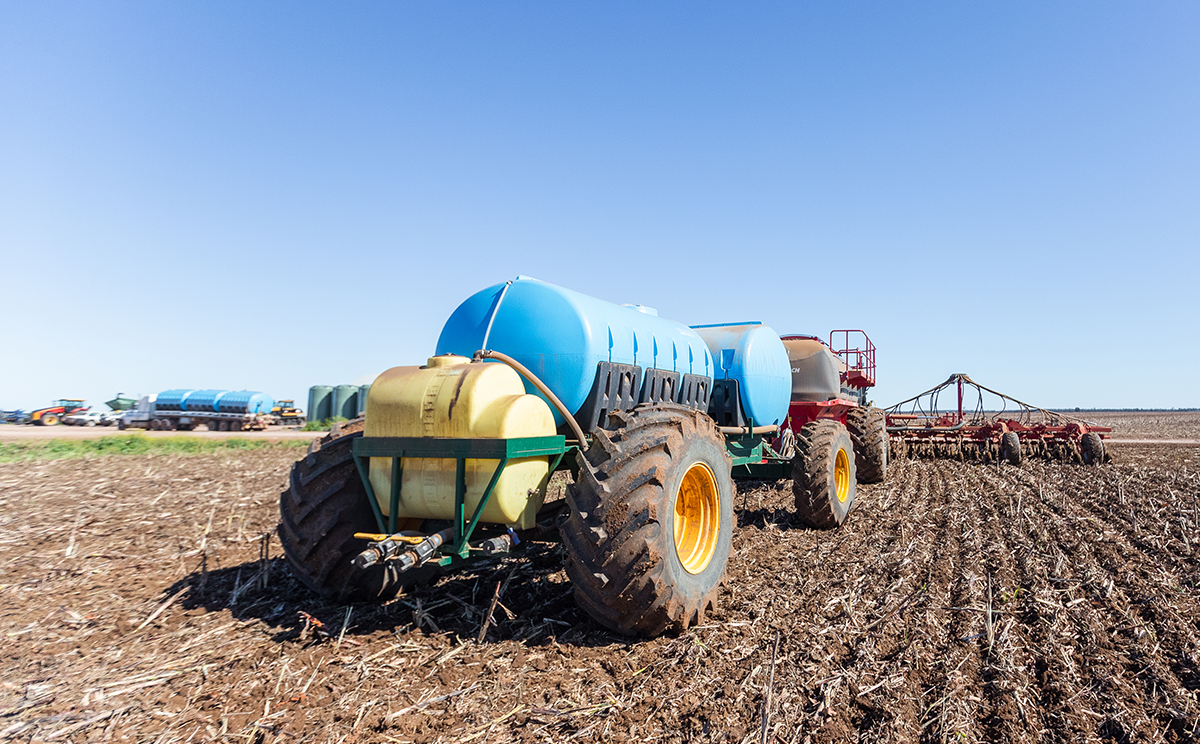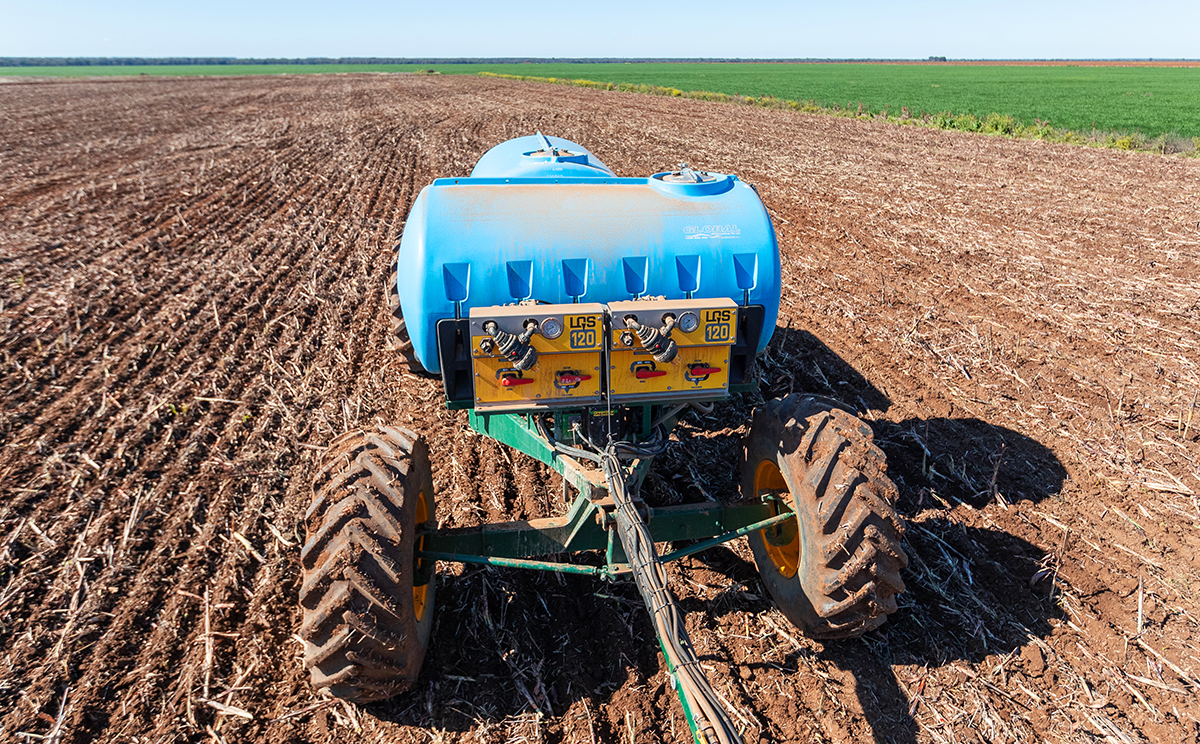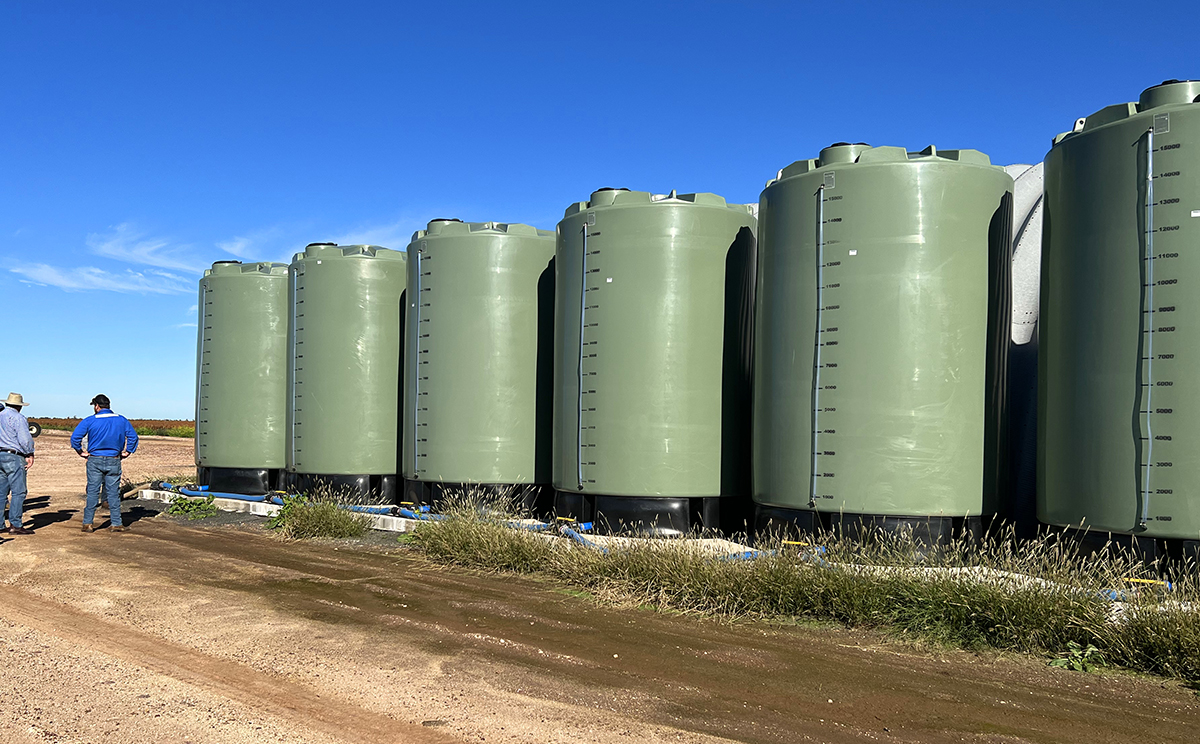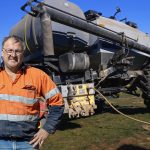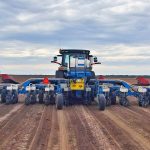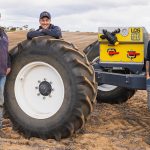Liquid application delivers on speed and flexible options into the future.
The Coggan family has earned a reputation as trailblazers during their century on the land.
From pioneering wheat growing in their patch of the Western Downs region of southern Queensland, to integrating livestock and grain production and adopting modern farming practices – including liquid nutrient application – they have continued to break new ground.
| ABOUT |
|---|
- WHO: Phillip & Tom Coggan
- WHERE: Meandarra, Queensland
- CROP: 22,500 hectares of irrigated and dryland cropping (wheat, barley, chickpeas, triticale, sorghum), plus grazing, cattle and lamb feedlots and a Meatmaster sheep stud
- INPUTS: FLOWPHOS 15 at 30L/ha, UAN, chickpea inoculant
- EQUIPMENT: Liquid Systems (SA) G22 Module with M6 Section Control Dual Stacker and Two LQS 120 Modules with M6 Section Control Dual Stacker on 18m Horsch Sprinter tyne machines
| KEY OUTCOMES OF GOING TO A LIQUID SYSTEM |
|---|
- Doubled seeder capacity and improved safety with refilling only in daylight
- Operational efficiencies
- Faster germination and higher yields
- Simple operation
Coggan Farms is now operated by the fourth and fifth generations: Phillip, his wife Cindy and their son Tom.
The business has pursued a strategy of diversification, vertical integration and innovation, in order to manage the risk of drought and fluctuating commodity prices.
Winter cereal and legume crops, and summer crops of Triticale and Sorghum for grain and Silage are produced across 11 properties totalling 22,500 hectares. Of that, 810ha is irrigated from overland flow and Parry Moolan Creek.
There’s also a multi-species feedlot with a license to hold 19,500 head of cattle and 4000 sheep. The ration is mixed from their own grain, with the addition of cottonseed that is bought in.
Zero-till farming since 1980, the Coggans embraced a controlled traffic farming system 21 years ago.
Phillip said they made the switch to liquids in 2020 after looking for a way to optimise air seeder use.
With huge areas to cover at sowing, they found it frustrating to lose so much downtime refilling the air seeders every 7-7.5 hours.
It’s worked a treat. We can seed for 15 hours without stopping and we now fill up the air seeders in daylight only, which is a big plus.
It was also potentially dangerous for operators to be refilling the machines at night.
“I was looking for a way to do it better,” Phillip said.
“We run a second cart with liquid behind the airseeder, so you get double the capacity out of your seed, because we use both bins for seed instead of one for seed and one for fertiliser. It’s worked a treat. We can seed for 15 hours without stopping and we now fill up the air seeders in daylight only, which is a big plus.”
“We already had a body truck for filling up sprayers, so we just used that for filling up with liquids,” Phillip said.
“But also, I made a big trailer for spraying out large volumes of fungicide for chickpeas, which is 45,000 litres in three tanks. And that’s what we use for transferring liquid at seeding time now. It’s all three-inch plumbed, and it works so well. It saves a lot of time in filling.”
They bought a Liquid Systems (SA) G22 Module and M6 Section Control Dual Stacker for the bar of an 18m Horsch Sprinter tyne machine in 2020.
And last year they added two LQS 120 Modules running in series with M6 Section Control Dual Stacker to a second 18m Horsch Sprinter tyne machine.
This has given them the flexibility to apply FLOWPHOS 15 and UAN on cereals or FLOWPHOS 15 and inoculant in-furrow on chickpeas, and the potential to mix nutrients such as zinc or manganese with the starter fertiliser if it was warranted in future.
Phillip said they continued to apply granular urea on wheat, barley and sorghum crops, even though spreading fertiliser was less accurate than using liquids.
“We’re using a mixture,” he said.
“We’ll never go totally liquids because of the volume of nitrogen required under irrigation. It comes down to price. If I put out all liquid nitrogen compared to urea, it’s going to cost me an extra $1 million in nitrogen.”
Phillip said the transition to liquids was relatively painless and they built their own liquid carts, plumbing the units into the seeder bars themselves.
The first cart was built from a 9000L air seeder and the two Horsch Sprinters each have two 5000 litre tanks.
The rigs, which are all equipped with ISOBUS John Deere Section Control and GreenStar Rate Controller, have been used to apply FLOWPHOS 15 at variable rates of 20-40L/ha to both summer and winter crops, and liquid inoculant for chickpeas.
Fungicide seed coatings are applied separately to wheat seed ahead of sowing.
Phillip said the benefits of liquid fertiliser became apparent as soon as they started using it. “And the seed strikes very, very quickly, like within 24 hours,” he said. “It’s especially noticeable in drier planting conditions. We’re growing a lot better crops now than we were.”
Phillip said it was difficult to quantify how much of the improvement has been due to adopting liquids because they had also upgraded planters and embarked on a program of deep ripping soil where hard layers were suspected of impairing root development.
“The yields have been definitely better, since we’ve gone to liquids,” he said.
“They’ve all been good crops, and we’ve had no failures, except for the 2019 drought, which was pretty tough anyway. We still did grow grain, even in drought, but not much. I think it’s a combination of things, not just one thing.”
Phillip praised Liquid Systems (SA) for its professionalism as well as producing systems that have done everything they were told they would.
What he likes most is that the units are very simple to use and the metering tube “works really well”.
The Coggans set the system up to turn on and off from the implement height switch, to raise and lower the implement as normal.
“Once the pumps are turned on initially for the day, you’ve just got to work one lever,” he said. “So it’s very simple.”
He suggested any farmers considering making the switch to liquid products take the time to visit someone who has already done it. “Go and have a look at a set up somewhere,” he said.
“That’s the most important thing. See how it’s all plumbed in and how you do it, and then work on the logistics when you start using UAN if you use a lot of volume. There’s a lot more things we can do with UAN that we haven’t even started to work on yet.”
Liquid Systems were very professional in how they do things and everything they say about it is true. It’s very simple to use and the metering tube works really, really well.
Get a Quote
"*" indicates required fields

